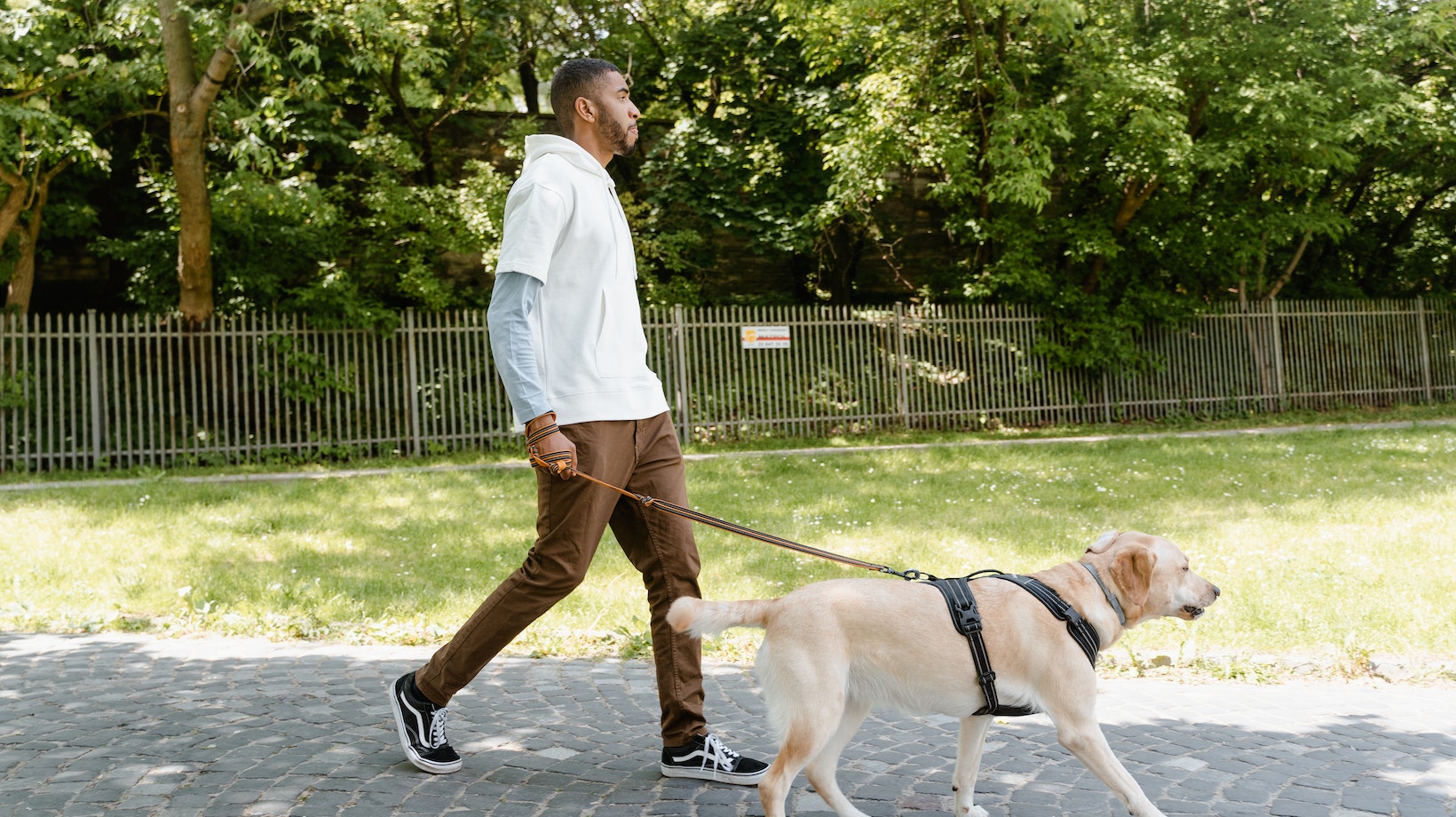How To Get Your Dog To Stop Pulling On Leash
To address this issue, start by teaching your dog basic obedience commands such as “sit” and “stay.” This will establish you as the leader and help them understand that they need to listen to you during walks. Additionally, make sure you have the right equipment, such as a sturdy harness or a head collar, which can give you more control over their movements.
Next, work on desensitizing your dog to distractions. Gradually expose them to different environments and gradually increase the level of difficulty. Reward their good behavior with treats or praise whenever they walk calmly beside you without pulling. Consistency is key here – practice these exercises regularly until walking politely becomes a habit for your pup.
Firstly, it’s important to establish clear expectations and consistency. Dogs thrive on routine, so incorporating regular training sessions into your daily walks will help reinforce proper leash behavior. Start by using positive reinforcement methods such as treats or praise when your dog walks calmly beside you without pulling. Gradually increase the duration and distance of these good walking behaviors while rewarding them consistently.
Secondly, consider using tools like front-clip harnesses or head halters that discourage pulling. These devices provide additional control over your dog’s movements and redirect their attention back towards you whenever they attempt to pull ahead. Be sure to introduce these tools gradually, allowing your dog time to adjust and associating them with positive experiences.
The Importance Of Proper Leash Handling
Proper leash handling is crucial for successful training outcomes and ensuring both yours and your pup’s safety during walks. Always hold the leash securely but avoid tension that may inadvertently encourage pulling from your dog. A loose grip allows for better communication between you two, promoting trust and cooperation.
Additionally, pay attention to your body language while walking with your dog. Maintain an upright posture and avoid leaning forward or backward as this can disrupt the balance between you two. By remaining calm yet assertive in your movements, you’ll convey a sense of leadership that encourages your dog’s focus on following rather than leading.

Building A Strong Foundation For Leash Training
To build a strong foundation for successful leash training, it is essential to work on your dog’s basic obedience commands. By mastering these commands, such as “sit,” “stay,” and “heel,” your dog will have a solid understanding of their role and expectations during walks.
Start by teaching these commands in a controlled environment, gradually introducing distractions to help your dog generalize the learned behaviors. Consistency is key – always reward and praise your dog for correct responses to reinforce their understanding of each command.
Addressing Distractions And Challenges On Walks
- Start with basic obedience training: Teaching your dog basic commands like “sit,” “stay,” and “heel” can be incredibly helpful in controlling their behavior during walks. Practice these commands in a controlled environment before venturing out into distracting areas.
- Gradually expose your dog to distractions: Introduce your dog to different environments gradually, starting with low-distraction areas such as quiet streets or parks. As they become more comfortable, slowly increase the level of distractions by taking them to busier places like cafes or pet-friendly events.
- Use positive reinforcement: Rewarding your dog for good behavior is an effective way to encourage them to stay focused on you during walks. Carry treats or use verbal praise when they walk calmly by your side or ignore tempting distractions.
- Redirect their attention: If your dog gets easily distracted by squirrels, other dogs, or interesting smells, redirect their attention back to you using a favorite toy or treat. Engaging them in play or offering rewards can help shift their focus away from the distraction.
- Consider using training aids: There are various training aids available that can assist in curbing pulling behaviors. Harnesses designed specifically for leash pulling issues distribute pressure evenly across the chest rather than the neck, making it easier for you to control the pulling without causing harm.
- Practice loose leash walking: Encourage loose leash walking by stopping whenever your dog starts pulling and only moving forward when there is slack in the leash. This teaches them that pulling will lead to delays while walking nicely will get them to their destination faster.
Remember, addressing distractions and challenges during walks requires consistency and patience. With time, practice, and positive reinforcement, you’ll be able to train your dog to walk calmly on a leash, making walks more enjoyable for both of you.